Ford Ranger vs Jeep Compass – Differences & prices compared
Both models have their strengths – but which one suits you more?
Compare performance, efficiency, price and space directly: Ford Ranger or Jeep Compass?
Costs and Efficiency:
When it comes to price and running costs, the biggest differences usually appear. This is often where you see which car fits your budget better in the long run.
Jeep Compass has a slight advantage in terms of price – it starts at 34200 £, while the Ford Ranger costs 37500 £. That’s a price difference of around 3325 £.
Fuel consumption also shows a difference: Jeep Compass manages with 2 L and is therefore decisively more efficient than the Ford Ranger with 3.10 L. The difference is about 1.10 L per 100 km.
As for range, the Jeep Compass performs clearly better – achieving up to 500 km, about 458 km more than the Ford Ranger.
Engine and Performance:
Under the bonnet, it becomes clear which model is tuned for sportiness and which one takes the lead when you hit the accelerator.
When it comes to engine power, the Ford Ranger has a a bit edge – offering 292 HP compared to 240 HP. That’s roughly 52 HP more horsepower.
In acceleration from 0 to 100 km/h, the Jeep Compass is slight quicker – completing the sprint in 7.30 s, while the Ford Ranger takes 7.90 s. That’s about 0.60 s faster.
In terms of top speed, the Jeep Compass performs slight better – reaching 200 km/h, while the Ford Ranger tops out at 190 km/h. The difference is around 10 km/h.
There’s also a difference in torque: Ford Ranger pulls decisively stronger with 697 Nm compared to 345 Nm. That’s about 352 Nm difference.
Space and Everyday Use:
Beyond pure performance, interior space and usability matter most in daily life. This is where you see which car is more practical and versatile.
Both vehicles offer seating for 5 people.
In curb weight, Jeep Compass is distinct lighter – 1575 kg compared to 2082 kg. The difference is around 507 kg.
When it comes to payload, Ford Ranger convincingly takes the win – 1108 kg compared to 470 kg. That’s a difference of about 638 kg.
Who comes out on top?
Overall, the Jeep Compass shows itself to be slightly ahead and secures the title of DriveDuel Champion.
It convinces with the more balanced overall package and proves to be the more versatile choice for everyday use.
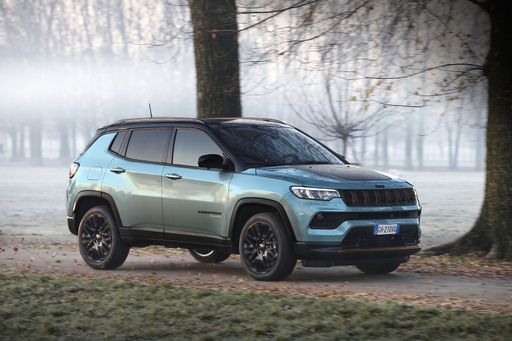
Jeep Compass
Ford Ranger
The Ford Ranger stands out in the pickup market with its robust build and versatile capabilities, making it a popular choice for both work and leisure. Its modern design is complemented by a well-equipped interior, providing comfort and advanced technology. Whether tackling challenging terrains or cruising through the city, the Ranger delivers a reliable and dynamic driving experience.
details @ media.ford.com
@ media.ford.com
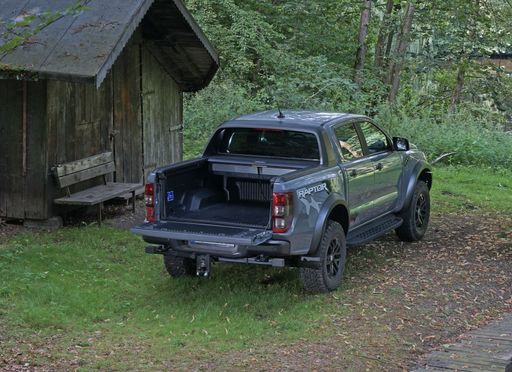 @ media.ford.com
@ media.ford.com
Jeep Compass
The Jeep Compass combines a rugged aesthetic with modern sophistication, making it a standout choice in the compact SUV segment. Its robust design is complemented by a comfortable interior that offers ample space and cutting-edge technology for a seamless driving experience. Whether tackling urban environments or venturing off-road, the Compass provides versatility and reliability, embodying the adventurous spirit synonymous with the Jeep brand.
details @ media.stellantis.com
@ media.stellantis.com
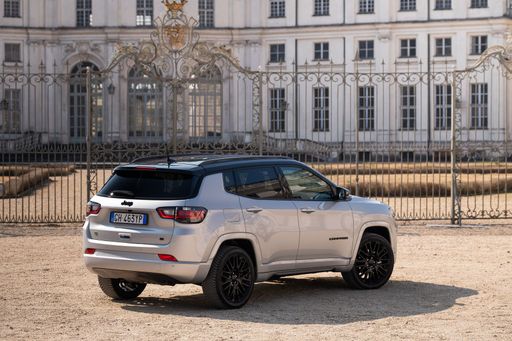 @ media.stellantis.com
@ media.stellantis.com
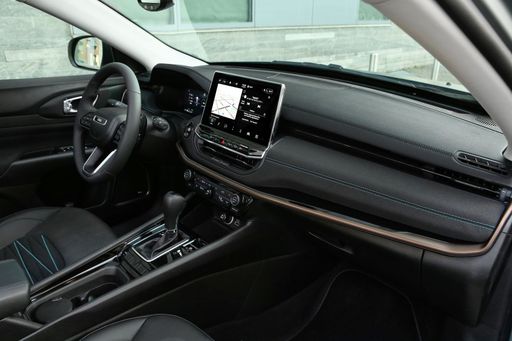 @ media.stellantis.com
@ media.stellantis.com
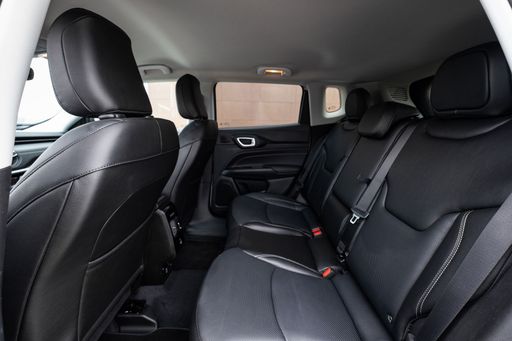 @ media.stellantis.com
@ media.stellantis.com
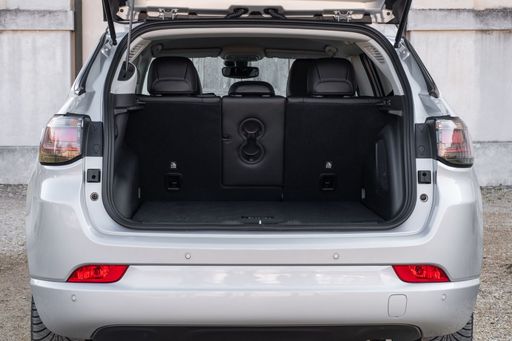 @ media.stellantis.com
@ media.stellantis.com

|

|
|
|
|
Costs and Consumption |
|
|---|---|
|
Price
37500 - 71900 £
|
Price
34200 - 46900 £
|
|
Consumption L/100km
3.1 - 13.8 L
|
Consumption L/100km
2 - 5.9 L
|
|
Consumption kWh/100km
-
|
Consumption kWh/100km
17.50 kWh
|
|
Electric Range
42 km
|
Electric Range
36 - 500 km
|
|
Battery Capacity
11.80 kWh
|
Battery Capacity
74 kWh
|
|
co2
70 - 315 g/km
|
co2
0 - 133 g/km
|
|
Fuel tank capacity
80 L
|
Fuel tank capacity
36 - 55 L
|
Dimensions and Body |
|
|---|---|
|
Body Type
Pickup
|
Body Type
SUV
|
|
Seats
2 - 5
|
Seats
5
|
|
Doors
2 - 4
|
Doors
5
|
|
Curb weight
2082 - 2511 kg
|
Curb weight
1575 - 2198 kg
|
|
Trunk capacity
-
|
Trunk capacity
420 - 550 L
|
|
Length
5370 - 5420 mm
|
Length
4404 - 4552 mm
|
|
Width
1918 - 1968 mm
|
Width
1819 mm
|
|
Height
1868 - 1922 mm
|
Height
1629 - 1675 mm
|
|
Max trunk capacity
-
|
Max trunk capacity
1230 - 1387 L
|
|
Payload
676 - 1108 kg
|
Payload
465 - 470 kg
|
Engine and Performance |
|
|---|---|
|
Engine Type
Diesel, Petrol, Plugin Hybrid
|
Engine Type
Petrol MHEV, Plugin Hybrid, Electric
|
|
Transmission
Manuel, Automatic
|
Transmission
Automatic
|
|
Transmission Detail
Manual Gearbox, Automatic Gearbox
|
Transmission Detail
Dual-Clutch Automatic, Automatic Gearbox, Reduction Gearbox
|
|
Drive Type
All-Wheel Drive
|
Drive Type
Front-Wheel Drive, All-Wheel Drive
|
|
Power HP
170 - 292 HP
|
Power HP
130 - 240 HP
|
|
Acceleration 0-100km/h
7.9 - 12.1 s
|
Acceleration 0-100km/h
7.3 - 10.3 s
|
|
Max Speed
180 - 190 km/h
|
Max Speed
180 - 200 km/h
|
|
Torque
405 - 697 Nm
|
Torque
230 - 345 Nm
|
|
Number of Cylinders
4 - 6
|
Number of Cylinders
4
|
|
Power kW
125 - 215 kW
|
Power kW
96 - 177 kW
|
|
Engine capacity
1996 - 2993 cm3
|
Engine capacity
1199 - 1469 cm3
|
General |
|
|---|---|
|
Model Year
2022 - 2025
|
Model Year
2024 - 2025
|
|
CO2 Efficiency Class
G, B
|
CO2 Efficiency Class
D, B, A
|
|
Brand
Ford
|
Brand
Jeep
|
What drive types are available for the Ford Ranger?
The Ford Ranger is offered with All-Wheel Drive.
The prices and data displayed are estimates based on German list prices and may vary by country. This information is not legally binding.
